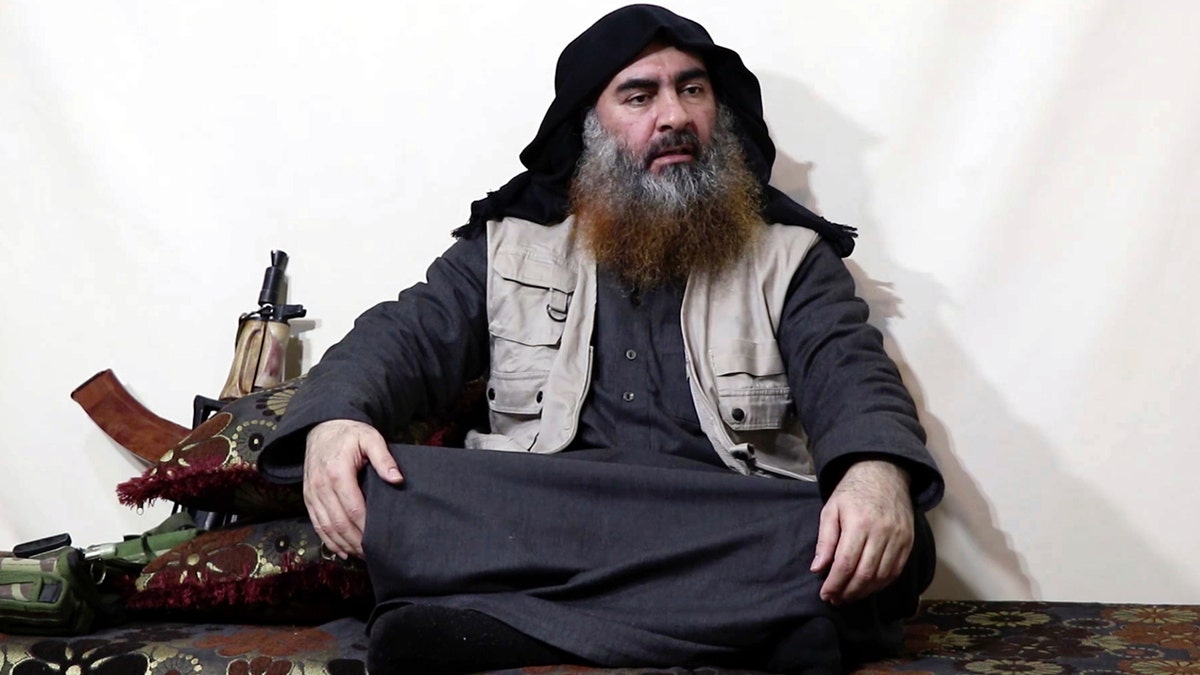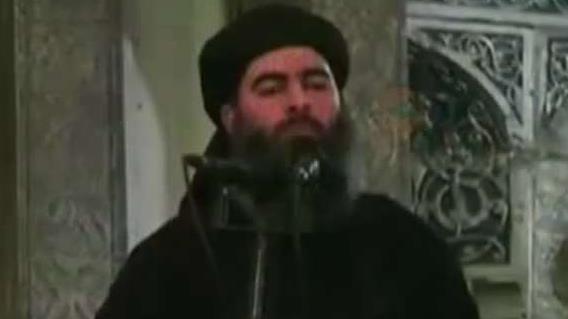DOD footage provides first look at raid that took down ISIS leader al-Baghdadi
The drone footage shows various parts of the raid on Abu Bakr al-Baghdadi's compound in northern Syria; national security correspondent Jennifer Griffin reports from the Pentagon.
The compound in northern Syria where the former leader of the Islamic State terror group was holed up until U.S. special operations forces stormed it last month was reportedly connected to the Internet until the day of the fateful raid.
Abu Bakr al-Baghdadi took his own life last month after he fled down a dead-end tunnel with three children, where he was found "whimpering" and trapped.
Documents obtained by Al-Aan TV's Jenan Moussa on Tuesday showed that Baghdadi's compound, near the Turkish border in northwest Syria’s Idlib Province, had Internet connection since February of this year and it remained active until 12 hours before the U.S. raid on Oct. 26.
Moussa tweeted that the documents she obtained showed the Internet subscription started at the compound on Feb. 1 and that the owner of the site paid a monthly fee in cash to the regional Internet provider.
The monthly fee was the equivalent of $8, and was paid through October, according to Moussa, who added that the username Baghdadi used was "mhrab."
Gen. Mazloum Abdi, the Syrian Democratic Forces commander, told Fox News that the Kurdish force had an informant inside the compound at the time of the raid. The agent had told them about the tunnels under the compound, how many people were with Baghdadi and about his planned move.
In the days after the raid, Marine Corps Gen. Kenneth F. McKenzie Jr., commander of U.S. Central Command, gave a play-by-play of the special operations forces raid of the compound, where he said Baghdadi’s explosive vest also killed two children he had brought with him into a tunnel when U.S. troops pursued him.

The former leader of ISIS, Abu Bakr al-Baghdadi, reportedly had the internet at his compound in Northern Syria. (Al-Furqan media via AP, File)
“He crawled into a hole with two small children and blew himself up while his people stayed on the ground,” the general said.
ISIS ENCOURAGING FOLLOWERS TO SET WILDFIRES IN FORESTS, FIELDS OF US, EUROPE
Al-Baghdadi led ISIS as it sought to establish an Islamic "caliphate" across Syria and Iraq. It's unclear what impact his death may have on the group, but U.S. officials and military commanders have said repeatedly that pockets of insurgents remain in Iraq and Syria and are still intent on conducting attacks.
At the end of last month, the terror group named his successor as Abu Ibrahim al-Hashimi al-Qurayhi, who is described as a scholar, well-known warrior and “emir of war."
Little is publicly known about Qurayshi, and the group typically identifies its leaders using pseudonyms that refer to their tribal affiliation and lineage. The group does not have a clear hierarchy and few details are known about the remaining top leaders.
CLICK HERE FOR THE FOX NEWS APP
On Tuesday, President Trump said that America now has its eye on the new leader of ISIS, telling the Economic Club of New York, "We know where he is."
Trump didn't mention the name of the new target but said the U.S. got Baghdadi, then got "his second" and now, "we have our eye on his third. His third has got a lot of problems because we know where he is, too."
The second in command Trump mentioned was likely Abu Hassan al-Muhajir, a close aide of Baghdadi and a spokesman for the group since 2016. He was killed in a joint U.S. and Kurdish military operation just hours after Baghdadi's death.
Fox News' Andrew O'Reilly, Lucia Suarez, Ronn Blitzer, Stephen Sorace, and the Associated Press contributed to this report.


